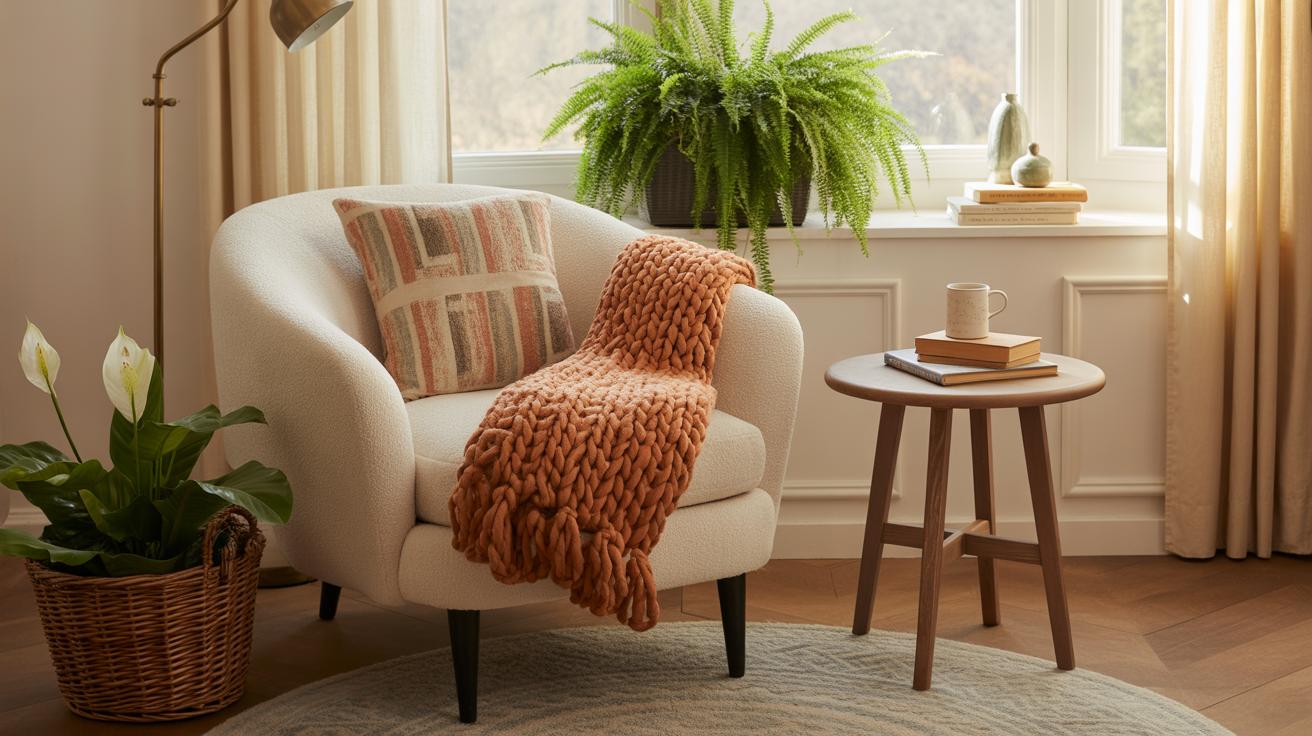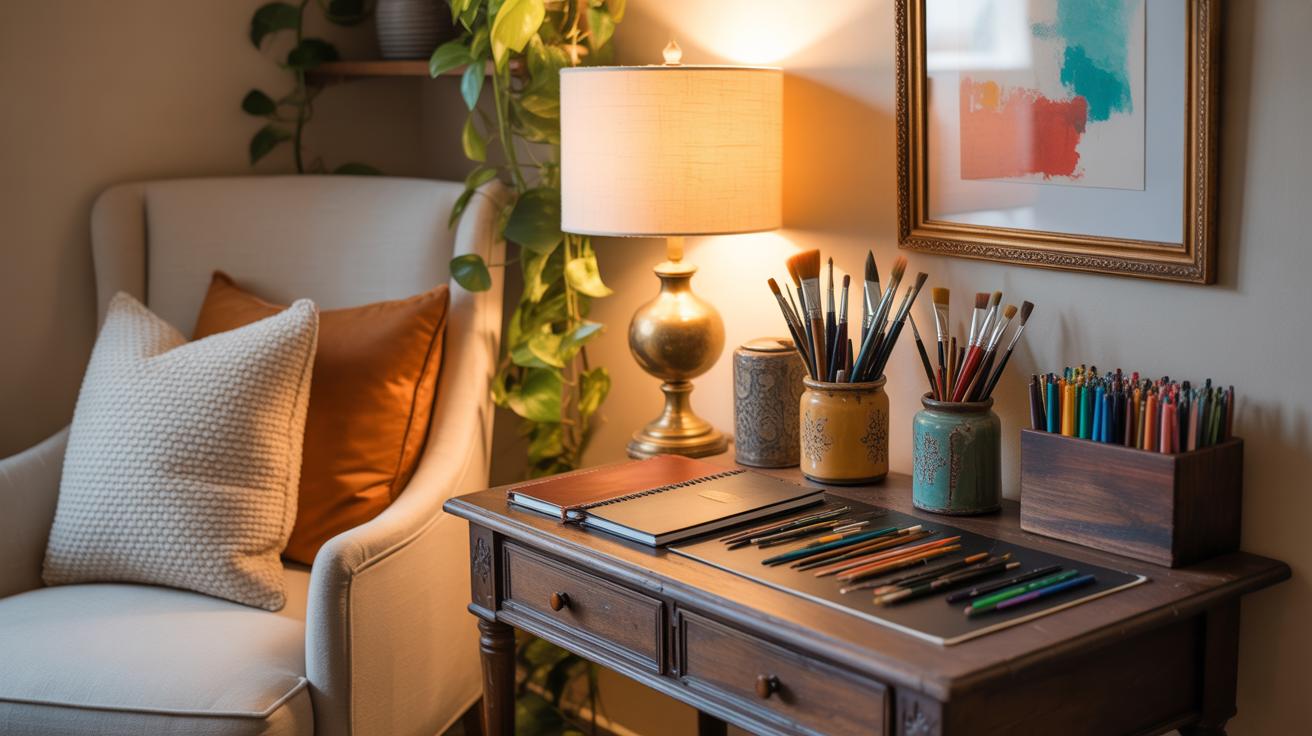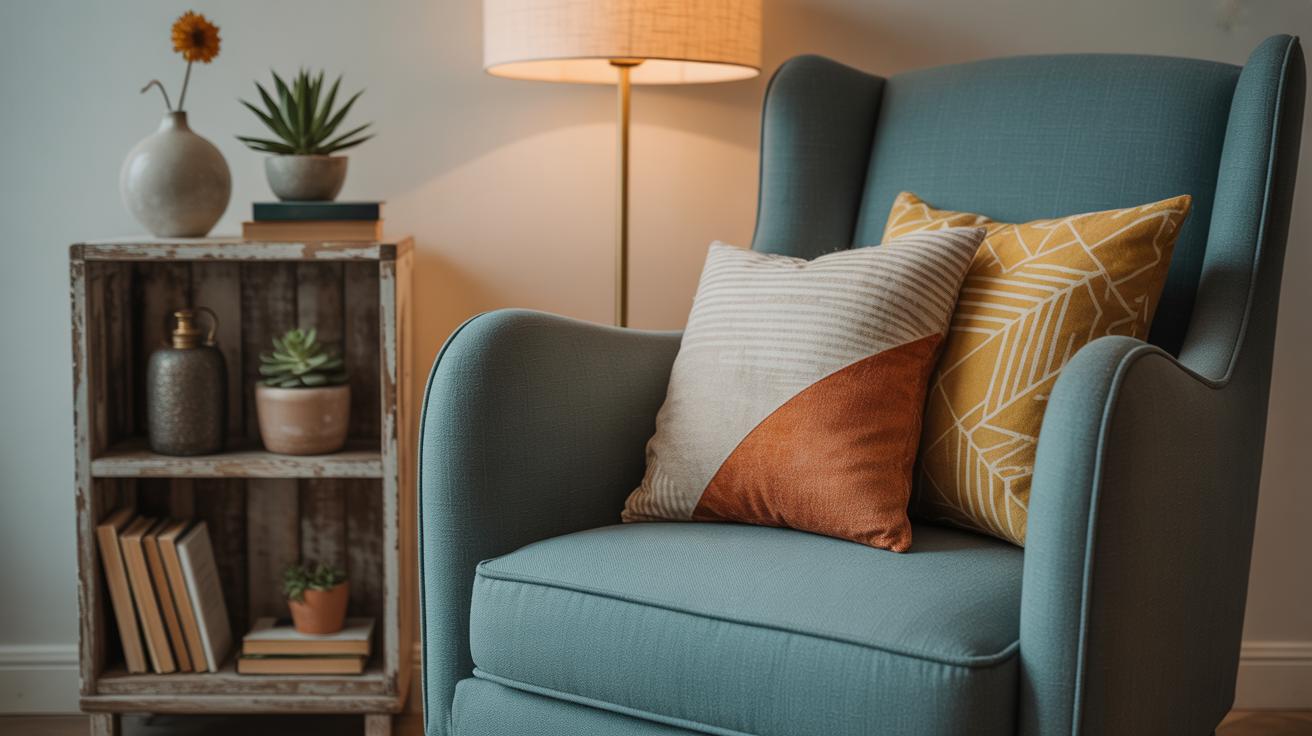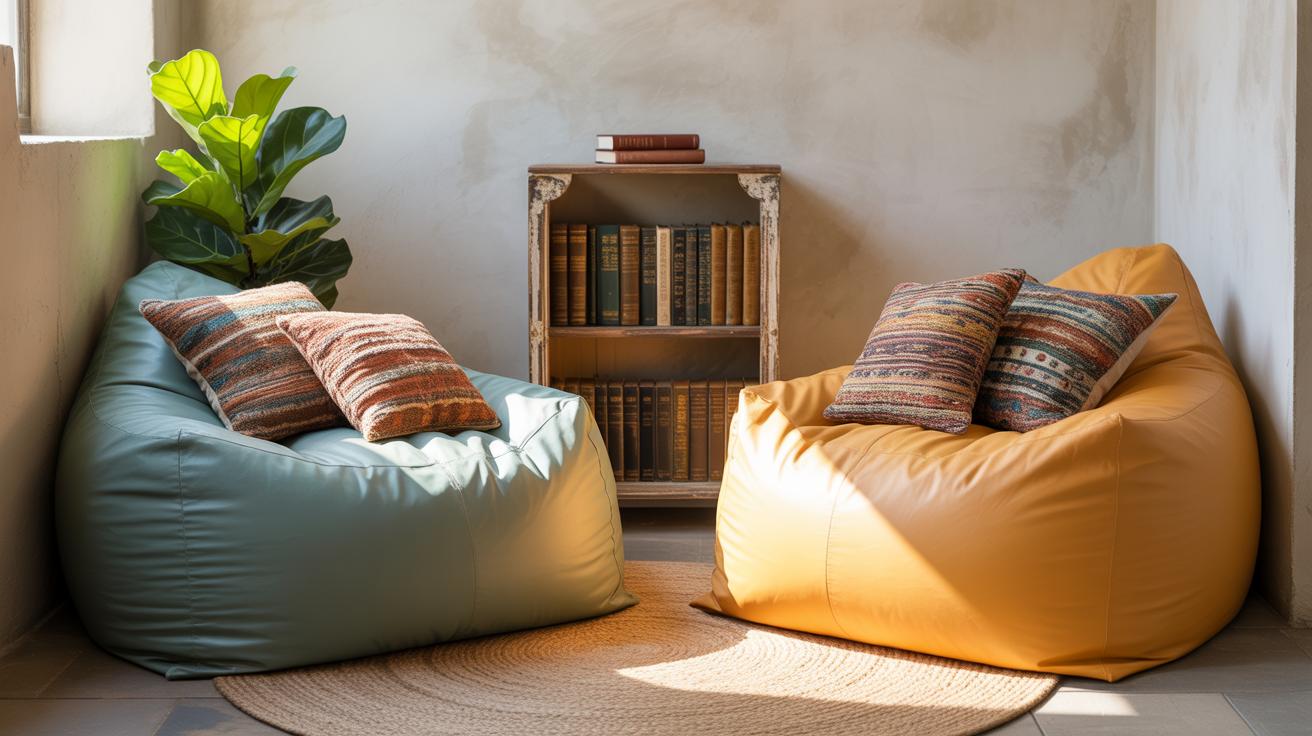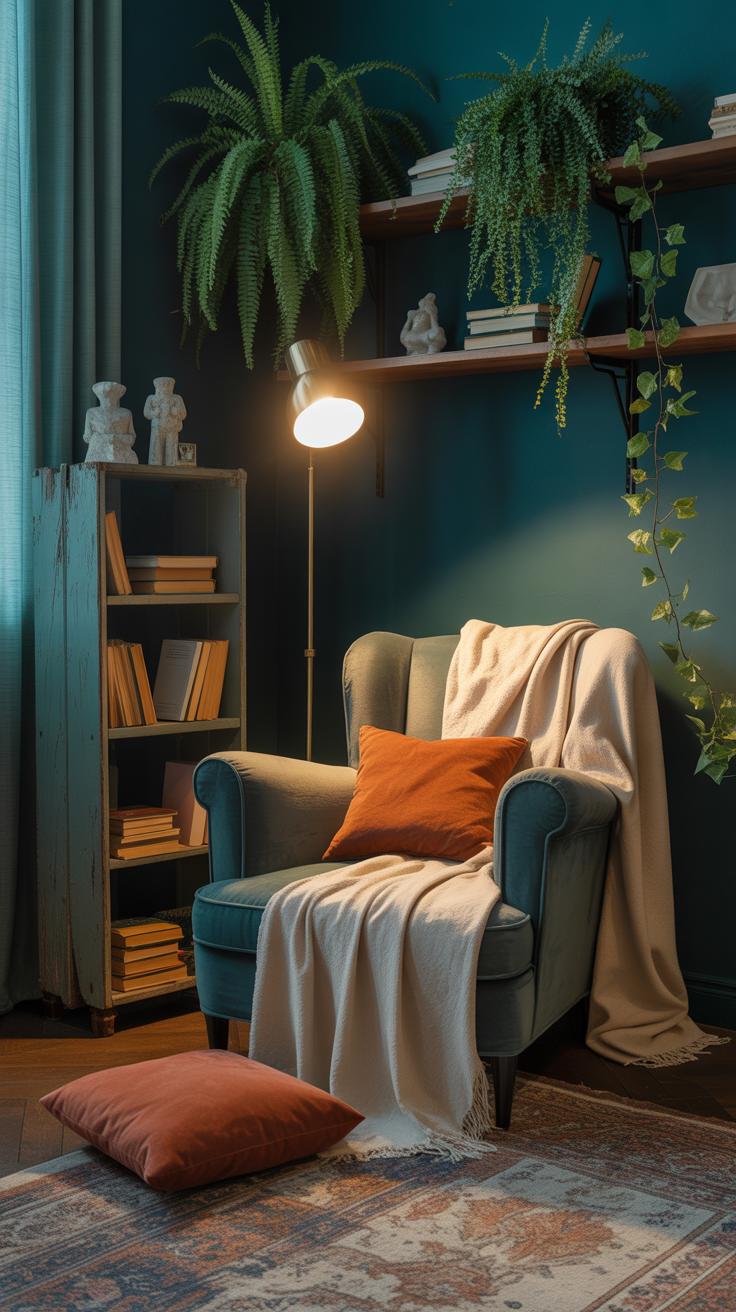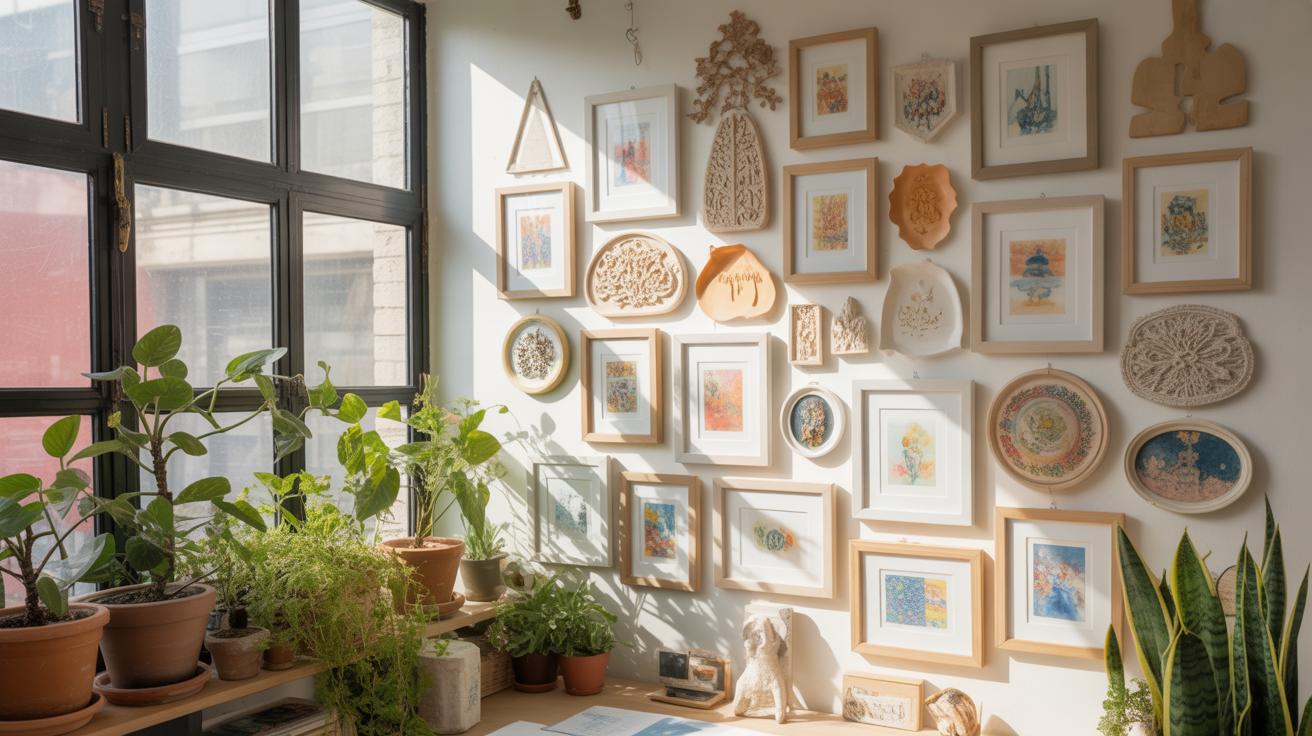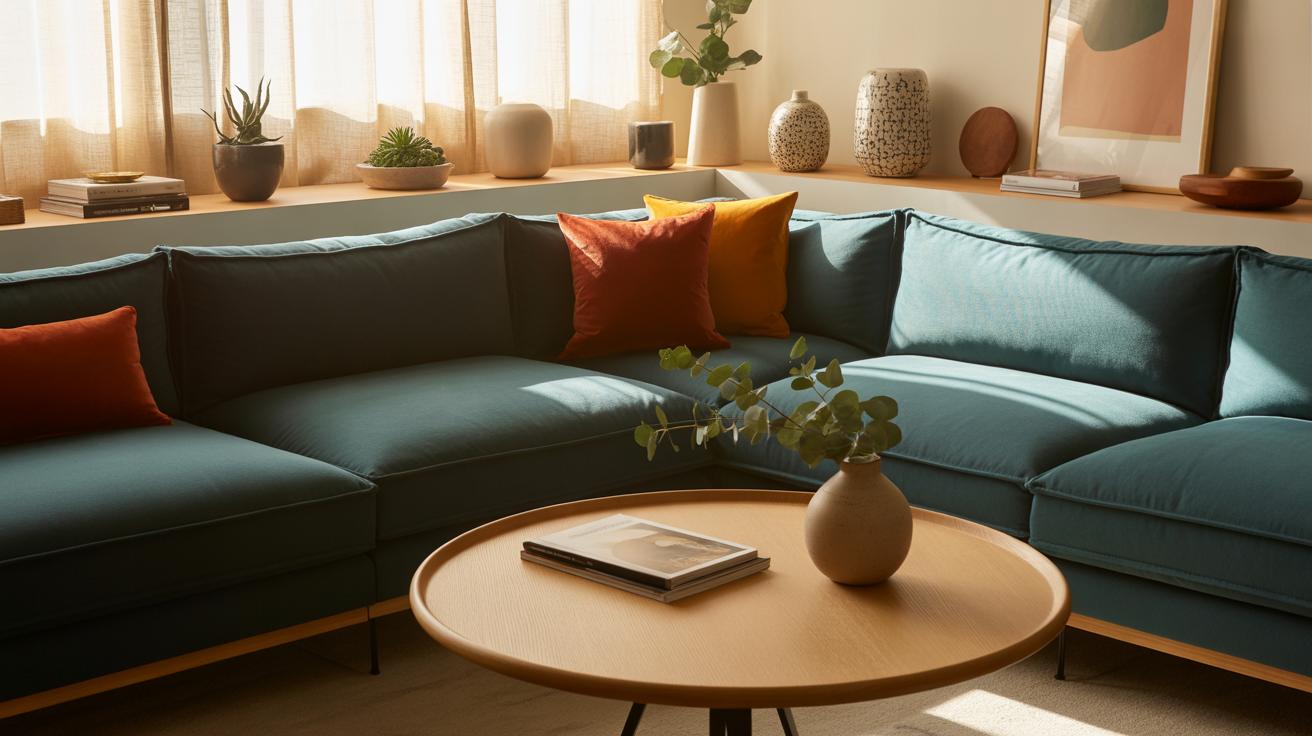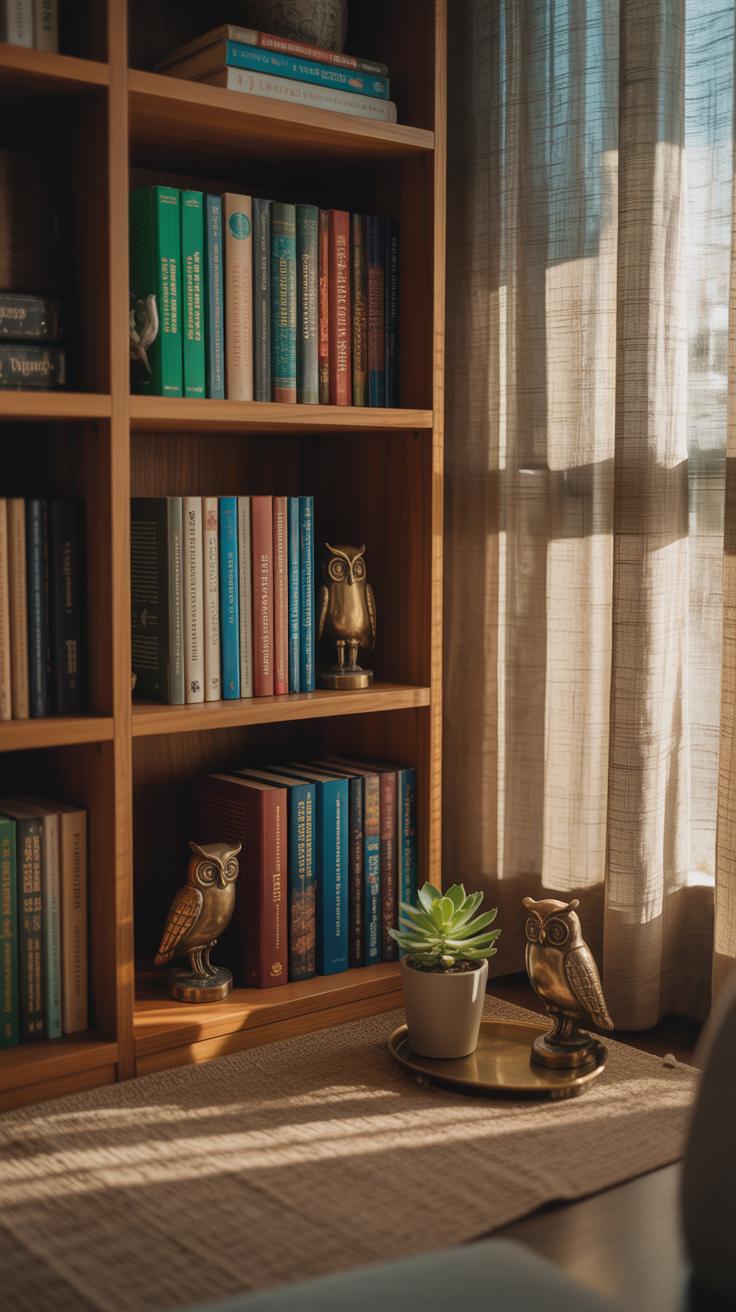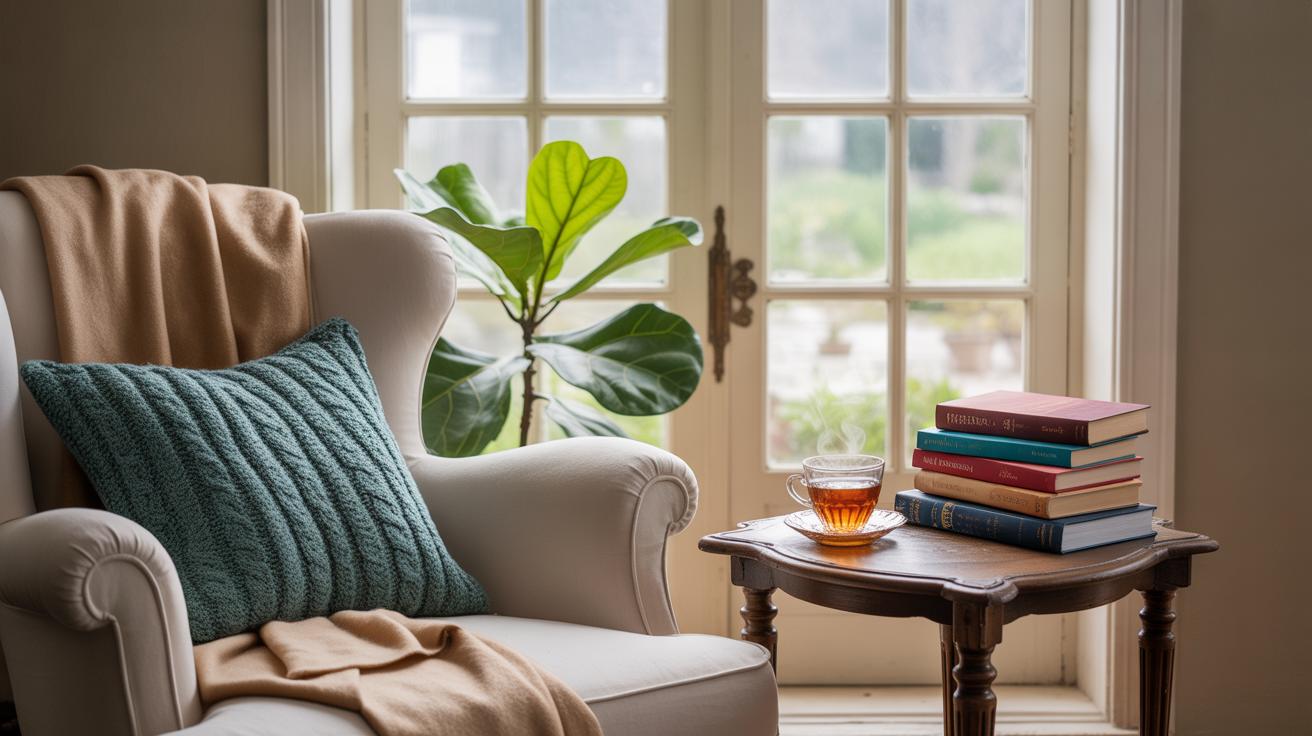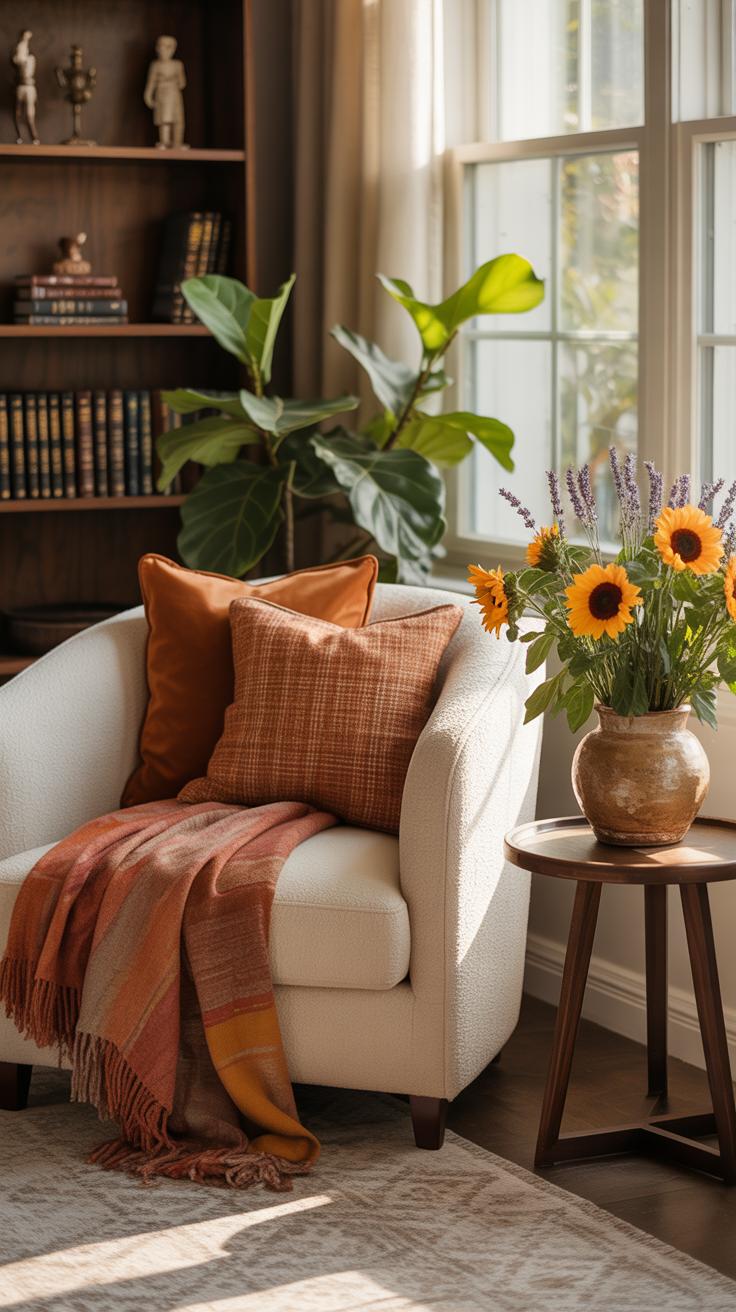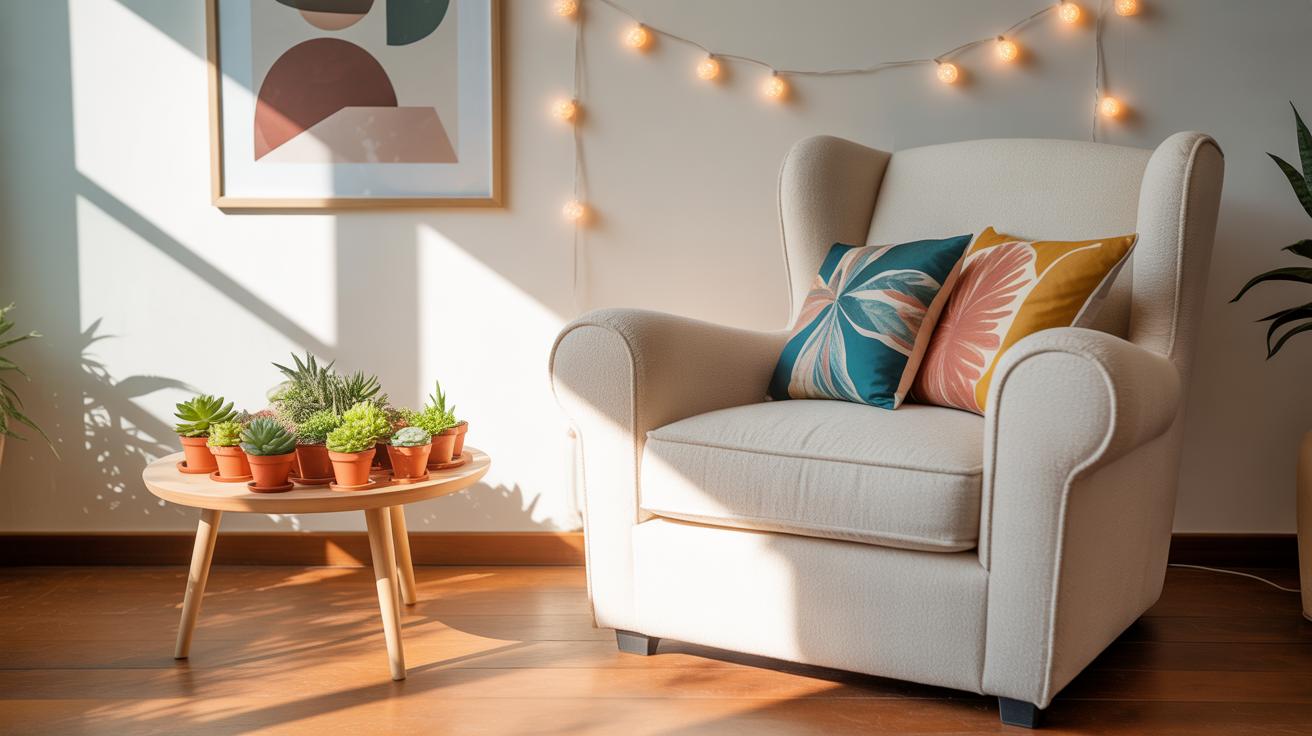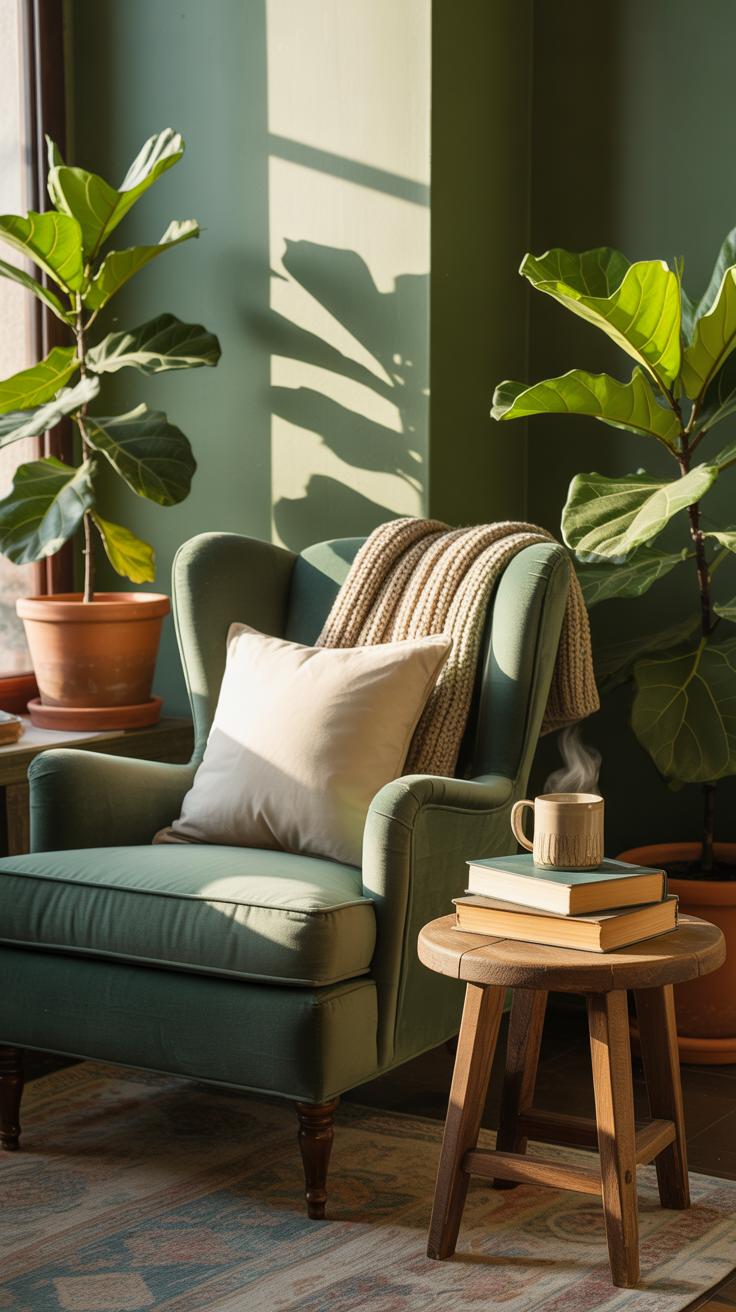Introduction
Creating a small reading nook cozy corner in your living room is a great way to enjoy your books and relax. This article offers living room reading nook ideas that combine comfort and practicality within a limited space. A well-planned nook allows you to escape into a good book right at home, ensuring peaceful moments whenever you want.
You will find useful tips on choosing the perfect spot, picking suitable furniture, adding the right lighting, and decorating to create a warm feeling. Whether your space is small or large, these ideas will help you build your ideal cozy corner for reading and unwinding.
Setup checklist for your reading nook
First, measuring your available space feels like a small but crucial step. You don’t want a chair that overwhelms the corner or shelves that won’t fit. Sometimes, I’ve had to rethink because the cozy nook ended up blocking a walkway—a mistake I wouldn’t repeat.
Your furniture choices matter a lot here. Look for a chair that supports your back without being too stiff or too soft. Maybe an ottoman for leg rest and a small side table for your tea or glasses. Shelves or a small bookcase nearby keep your favorite reads within reach.
Lighting seems straightforward at first, but it’s worth thinking about. Natural light is perfect during the day, but what about evenings? A lamp with adjustable brightness often comes in handy. Some people prefer desk lamps; others like floor lamps with a warm glow. Comfort accessories like a soft throw or cushions offer extra warmth and invite you to stay longer.
Don’t forget about noise levels. A spot near the TV might be tempting but maybe too distracting. Noise-absorbing rugs or curtains can help, if you want a quiet, relaxing atmosphere. Have you thought about where you naturally feel most at ease? That usually points to your nook’s best location.
Benefits of a dedicated reading nook
Having a small reading nook cozy corner brings more than just a charming spot to curl up with a book. For one, it can really sharpen your focus. When you carve out a specific place just for reading, your brain begins to associate that space with quiet and concentration. It’s easier to tune out distractions when you know this spot is “reading-only.” You might find yourself slipping into deeper thought or getting lost in a story faster than usual.
Besides improving focus, these nooks invite relaxation. Even a tiny corner with a soft throw and good lighting can signal your body to slow down. When I set up my own nook, I noticed my evenings felt calmer, less rushed. It’s like giving yourself permission to pause, and maybe that’s the real appeal.
Another benefit—there’s a subtle nudge to read more often. Because the nook is always there, looking welcoming, it tempts you to grab a book rather than scroll your phone. Small moments add up. It’s not about devouring novels in a weekend, just finding more frequent, enjoyable reading breaks.
How a nook enhances your reading habits
When you create a dedicated space for reading, it can change your habits in noticeable ways. Imagine having a spot where you sit down, physically separate from work or chores. That separation helps your mind switch modes. After a long day, even ten minutes in your nook can feel like a reset.
I once set up a corner with a comfy chair and a small lamp just for reading. At first, it was a bit awkward, like “Who am I to claim this spot?” But soon enough, it became my sanctuary. I found myself reaching for books more frequently, sometimes just for short bursts. The routine stuck, and before I realized it, reading was a regular part of my day again.
It’s not just about more time with books—your enjoyment grows too. When you’re comfortable and undisturbed, you engage better. The story feels richer, characters more alive. A nook doesn’t have to be grand or elaborate; even a simple corner can have a surprising impact.
Psychological effects of cozy spaces
There’s an undeniable comfort in cozy spaces. They seem to absorb stress and offer a feeling of safety, even if only for a little while. Spending time in a reading nook can lower anxiety and lift your mood, just by being a sheltered, quiet spot. The change in surroundings helps your mind unwind.
From personal experience, when I retreat to a corner with soft cushions and warm lighting, my thoughts slow down. It’s a contrast to noisy rooms or busy areas in the house. The coziness doesn’t just ease tension, it sometimes sparks creativity. You might feel calmer but also inspired to think or reflect.
This psychological shift makes reading nooks more than just furniture arrangements. They become small sanctuaries—places where you can briefly escape. And maybe that’s why, after a stressful day, the appeal of such a corner lingers longer than you expect.
Living room reading nook ideas under 100 dollars
Creating a small cozy corner for reading in your living room doesn’t have to drain your wallet. You can build a comfortable nook with budget-friendly choices that offer both function and a bit of charm. Think simple seating options—you don’t need a fancy armchair. Bean bags and floor cushions work surprisingly well and can be found for less than $30. They’re soft, adaptable, and you can stack or move them as you like. If you want something a little more structured, a small folding chair or even a pouf might fit nicely.
For books, instead of splurging on shelves, consider reusing crates or boxes. Stack them horizontally or vertically to hold your collection. It’s cheap, and with a bit of paint or fabric lining, they’ll look intentional.
Lighting can transform your nook without spending much. Clip-on lamps or small LED string lights can add warmth and focus light for reading. They’re easy to reposition and usually cost under $20. Throw in some inexpensive throws or cushions—maybe shop clearance aisles or discount stores—and you’ll introduce softness without fuss.
Does your space feel too plain? A cheap rug or a tapestry on the wall can add a subtle layer of personality. That’s often the difference between a corner you pass by and one you actually want to spend time in. Sometimes, less is more, but a little effort with small touches goes a long way when you’re working on a tight budget.
Common mistakes to avoid in nook design
Ignoring light sources and seating comfort
Picking the right lighting isn’t just about brightness—it’s about comfort and function. Too dim, and you’ll strain your eyes. Too harsh, and the nook feels uninviting. Many overlook this and end up with lamps that cast weird shadows or bulbs that flicker annoyingly. I once tried reading in a poorly lit corner and gave up after a few minutes because my eyes just couldn’t handle it.
Seating is another crucial factor. You might think a cute chair is enough, but if it’s stiff or awkwardly sized, you won’t want to spend more than a few minutes there. Comfort isn’t just fluff; it shapes how often you actually use the space. Some people go for style but forget the hours spent sitting—who wants that? You could have the coziest blanket, but if the chair isn’t right, the whole nook feels off.
Overcrowding and clutter issues
It’s easy to assume a reading nook should be packed with books, blankets, cushions, and little knick-knacks. But too much stuff can suffocate the spot. Clutter limits the space you can move in and, frankly, creates distractions. You might find yourself tidying more than actually reading, which defeats the purpose.
Also, overcrowding reduces that sense of calm and escape you want from a nook. A few well-chosen items work better than a chaotic mix. Think about what you really need—perhaps only a small side table and a lamp, rather than a shelf stuffed with every item you own. Too much visual noise can actually pull your mind away from the book.
Ever just stared at a mess and felt your motivation to settle in disappear? That’s the cautionary side of packing your nook indiscriminately. Keep it simple; your nook should invite you in, not overwhelm you before you even sit down.
How to organize books and accessories
When it comes to arranging books and magazines in a small reading nook, the trick is to keep things accessible but uncluttered. You don’t want to dig through piles to find what you want, yet cramming every item out of sight isn’t the answer either. Maybe start by sorting your books—favorites within arm’s reach, occasional reads tucked a bit further away.
Vertical shelving is a lifesaver for small spaces. Narrow, tall shelves draw your eyes upward and free up floor space. Sometimes, stacking a few books horizontally creates little platforms for accessories—a candle, a small plant, or your reading glasses. Hey, that extra surface can make a huge difference.
Baskets come in handy for magazines or those random bookmarks and notes that seem to multiply. If you’ve got a small side table or ottoman with storage, consider it a two-in-one: a spot to sit and a secret stash for your reading essentials. Multipurpose furniture can pull more weight than you guess.
Keeping your nook inviting relies on small habits. Maybe spend five minutes at the end of each day putting things back where they belong. Toss stray papers or recycle worn magazines. A tidy nook feels ready for you—far better than a chaotic pile that makes reading feel like a chore.
Choosing the right lighting for your nook
Lighting can make or break your reading nook. Natural light is often the first choice for many, especially if your nook sits near a window. It provides a soft, full-spectrum glow that feels easy on the eyes during the day. Yet, depending solely on daylight isn’t always practical—cloudy days, short winter afternoons, or a west-facing nook can leave you squinting or straining.
Lamps come into play here, filling in the gaps when daylight fades. But not all lamps are equal. A lamp with harsh white light can feel sterile and uncomfortable after a while. Warmer tones, around 2700 to 3000 Kelvin, tend to create a cozy atmosphere and reduce eye fatigue. Task lamps with adjustable arms or dimmers also help you direct light exactly where you need it, depending on the kind of book or magazine you’re holding.
Daylight offers an unmatched clarity for color and detail, but it shifts throughout the day, which can disrupt a steady reading experience. Lamps provide consistency but can sometimes feel artificial or too focused if the light source isn’t balanced. Perhaps the best approach is layering—use natural light when available and add a well-placed lamp to maintain comfort when it dims.
Think about your reading habits. Do you read mostly in the morning or closer to bedtime? Would a floor lamp behind a comfy chair work, or a clip-on light if your nook is really small? The challenge is finding what feels right to you—lighting is personal, after all. Experiment, and don’t be afraid to switch things up if your eyes aren’t quite happy.
Decorating your cozy corner
When decorating a small reading nook cozy corner, think about what makes the space feel inviting to you. It’s not just about filling up the area with things but choosing a few items that bring warmth and personality without overwhelming the spot. You might find yourself drawn to soft textiles, which do more than just look nice—they invite you to linger. A well-placed blanket or cushion, for example, can create a gentle contrast against a plain chair or bench. Those textures pull you in, make you want to settle down.
Besides fabrics, consider simple wall art with designs or quotes that resonate with your taste. A single framed print or a small collection of postcards pinned neatly can add character without clutter. Living plants, like a small fern or succulent, breathe life into the nook—but be careful. Too many can feel crowded. A bit of greenery offers freshness and a subtle pop of color that doesn’t compete with your reading material.
So, when setting up your cozy corner, ask yourself: what feels comforting without being fussy? What sparks joy but keeps things relaxed? It’s a bit of a balancing act—but the right touches can transform a tiny corner into a favorite retreat, where comfort meets quiet charm.
Examples of successful reading nooks
Minimalist corner with essential furniture
One small living room tucked into a corner features just the basics: a simple armchair, a slim side table, and a small bookshelf. It’s surprisingly effective, mainly because it skips clutter and focuses on comfort. The chair, while not plush, offers good back support and fits the space without overwhelming it. The table holds a cup of tea or a reading lamp, nothing extra. You might think such sparseness feels cold, but the simplicity keeps the nook visually calm and inviting in an understated way.
For someone who wants a quiet spot to read without distractions, this setup works well. It also leaves room for natural light to pour in, which is nice. Not everyone might love the plainness here, but for a lot of people, it makes the nook feel restful—a little break from the chaos of a full living room.
Colorful nook with layered lighting
A different example bursts with color and carefully placed lights. Imagine a lively corner with a cozy armchair upholstered in a rich jewel tone, surrounded by pillows in different patterns. A small rug anchors the space with warmth, making it feel separate from the rest of the room. What stands out here is how the lighting layers—there’s a floor lamp with soft light, a wall sconce casting gentle shadows, and even a few string lights for flair.
This multilayered lighting doesn’t just brighten the space but creates a mood. It can be adjusted based on the time of day or type of reading, adding a kind of flexibility this colorful nook has in spades. The colors help to energize the space, but sometimes, I wonder if it might feel a bit busy for someone wanting a truly quiet read. Still, the vibrancy can make you want to linger—maybe even to entertain friends who pop in unexpectedly.
Conclusions
Designing a small reading nook cozy corner does not need to be complicated or costly. By following a setup checklist and planning your space carefully, you can enjoy a dedicated area for reading that fits your style and needs. Furniture choice, lighting, and decoration all matter in creating comfort and enhancing your experience.
Remember to focus on your reading habits, space availability, and personal taste. Your small reading nook can become a favorite corner for relaxation and enjoyment. With the right ideas, you can transform an unused part of your living room into a charming spot that invites you back over and over.

